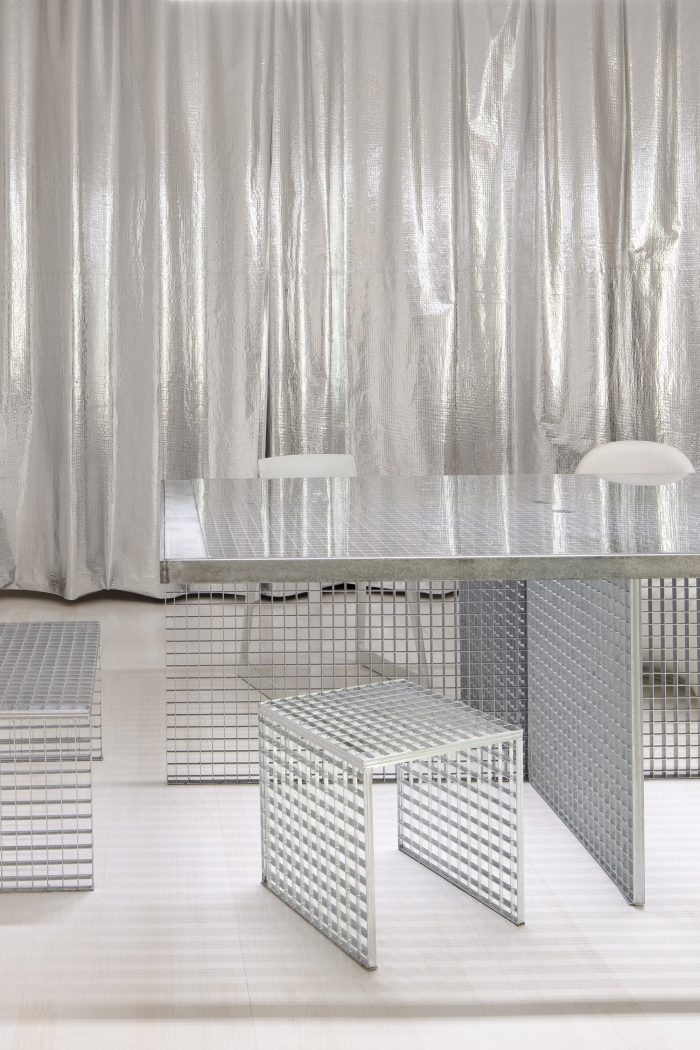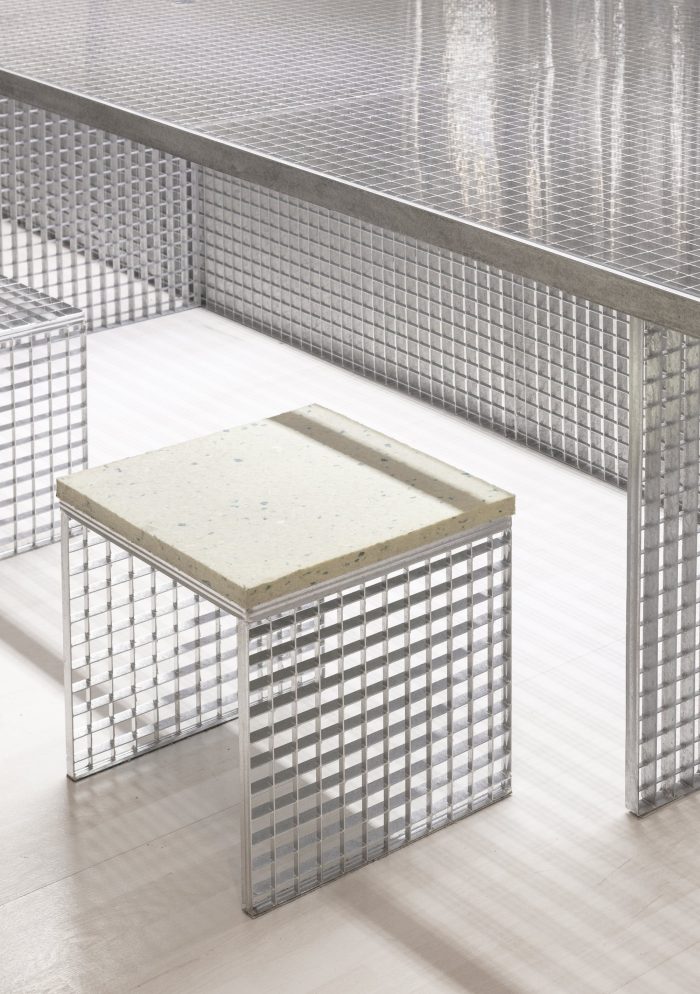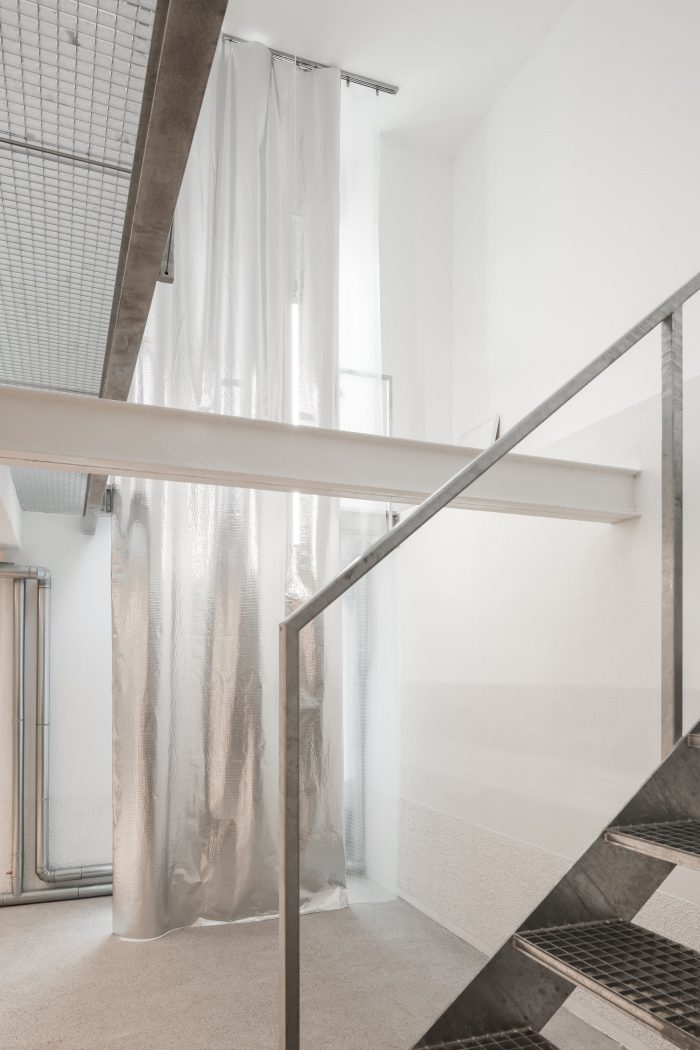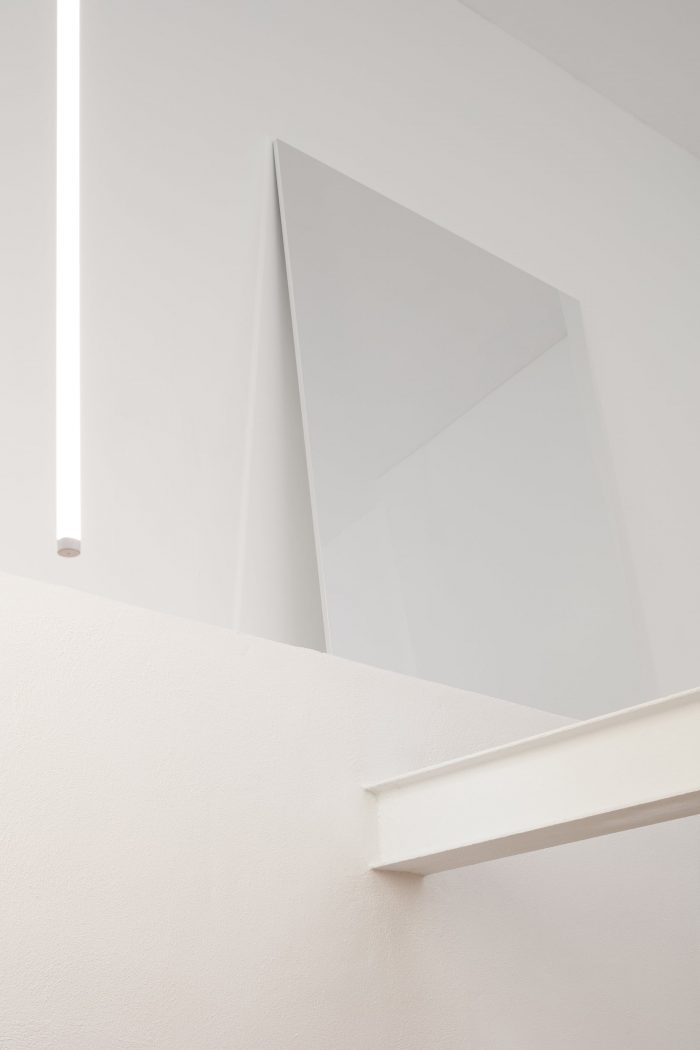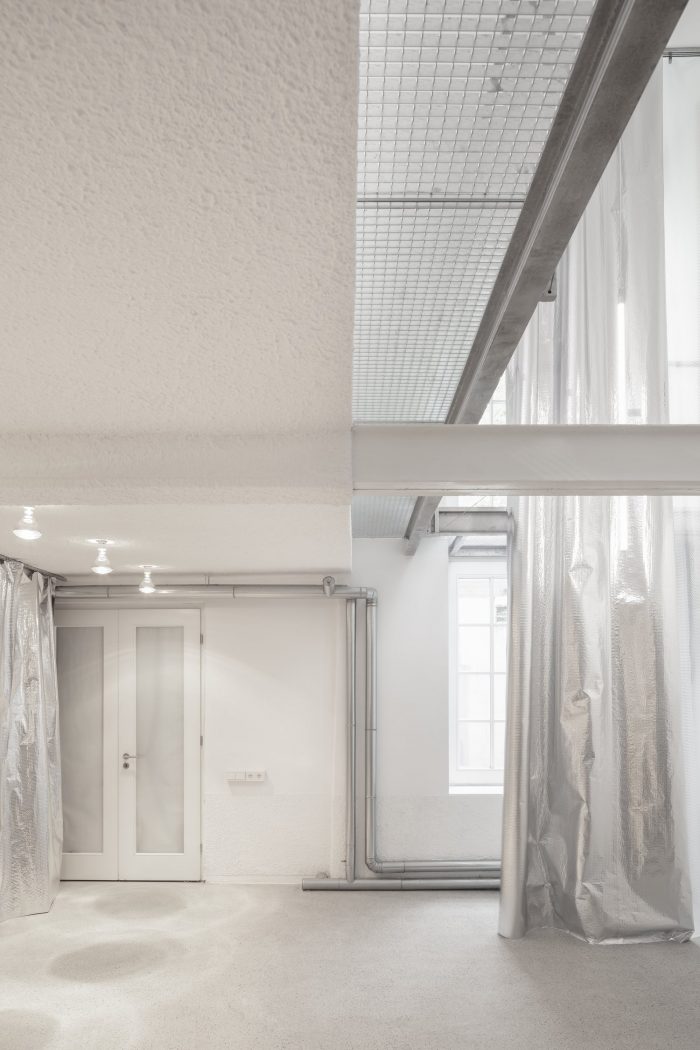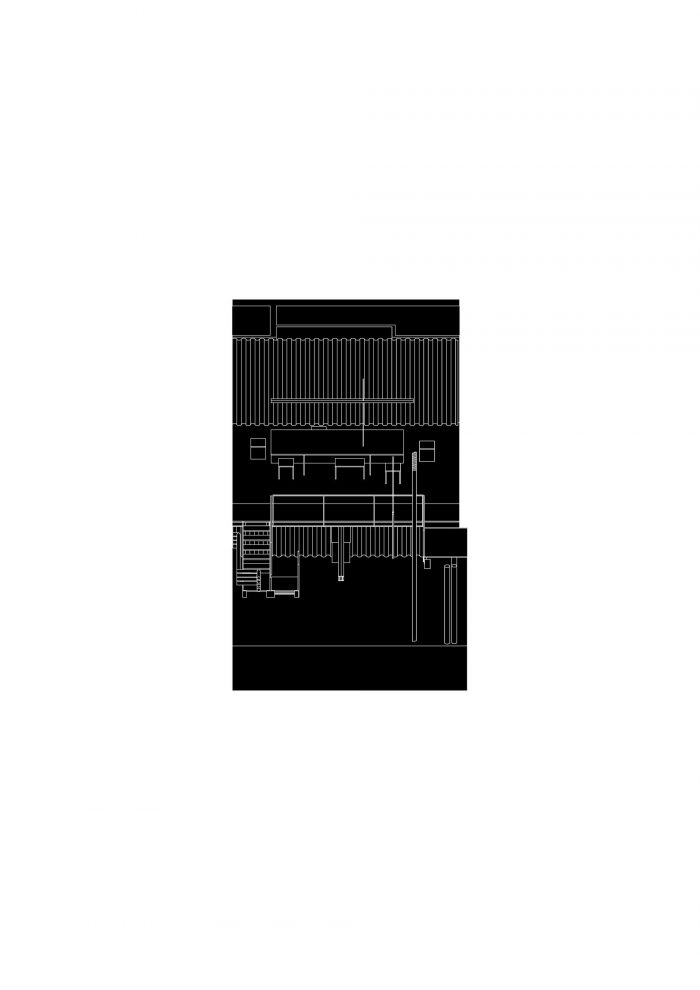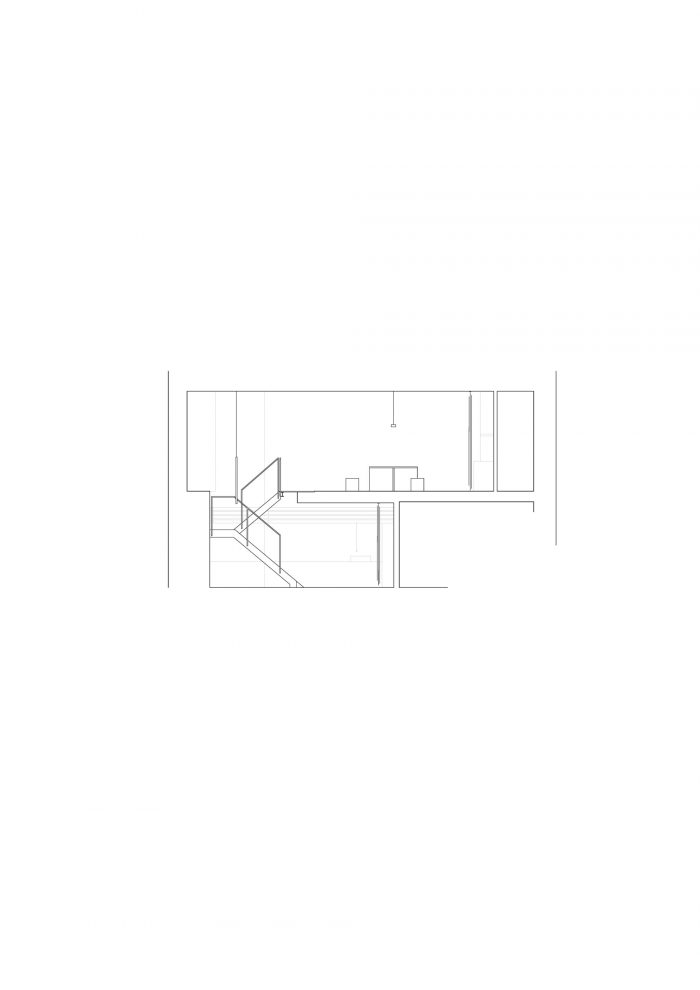这座两层楼的办公室扩建项目位于慕尼黑Au区伊萨尔河附近的一座世纪之交的建筑的后院。慕尼黑对新空间的持续需求特别增加了对现有建筑的压力。通过屋顶扩展和层数来实现密集化的潜力,要么已经几乎耗尽,要么受到当局的限制。在寻求进一步密集化的过程中,地下室楼层越来越受到关注。在伦敦,这种趋势几十年来一直很明显。
The two-story office extension is located in the backyard of a turn-of-the-century building near the Isar River in the Au district of Munich. The continuing demand for new space in Munich is increasing the pressure on existing buildings in particular. The potential for densification, by means of roof extensions and stories, is either already almost exhausted or limited by the authorities. In the search for further densification, the basement floors are increasingly coming into focus. In London, this trend has been evident for decades.
在慕尼黑的办公室改造中,地下室也被打通了,并通过一个空气空间与一楼相连。新的单元可以通过镀锌钢格板制成的固定装置进入。窗户被延伸到地下室,以提供足够的照明。背面由铝制防潮板制成的银色窗帘掩盖了厨房、和储藏架,以及通往厕所和储藏室的通道。同时,反光的表面有助于放松现有的照明状况。用气泡膜制成的窗帘提供了隐私,同时允许足够的光线进入室内。建筑物的存量被尽可能地保留下来,只有表面被翻新了。在地下室,混凝土楼板被暴露在地面上。在底层,橡木镶木地板被重新修整。
In the office conversion in Munich, the basement was also opened up and connected to the first floor via an air space. The new unit can be accessed via fixtures made of galvanized steel gratings. Windows were extended into the basement to provide adequate lighting. Silver curtains made of aluminum vapor barriers on the back conceal the kitchen, and storage shelves, as well as the passages to the toilet and to the storage rooms. At the same time, the reflective surfaces help to relax the existing lighting situation. Curtains made out of bubble wrap provide privacy while allowing sufficient light to come into the interior. The building stock was preserved as far as possible and only the surfaces were refurbished. In the basement, the concrete floor slab was exposed and ground. On the ground floor, the oak parquet was refinished.
家具是定制的,也是完全由镀锌钢格板实现的。钢制家具和装置是焊接的,没有螺丝连接,这进一步增强了物体的抽象性。架子和照明是由镀锌电缆盘建成的。紧挨着该单元有一个公寓,提供直接的通道以及与商业空间的各种视觉关系。该项目是在冠状病毒大流行期间实现的,使生活和工作在一个地方交织成为可能。
The furniture is custom-made and was also realized exclusively from galvanized steel gratings. The steel furniture and fixtures were welded and have no screw connections, which further enhances the abstract nature of the objects. Shelves and lighting were built from galvanized cable trays. Right next to the unit there is an apartment offering direct access as well as various visual relations with the commercial space. The project was realized during the coronavirus pandemic and makes an intertwining of living and working in one place possible.
干预措施是由工业材料组成的。铝制防蒸气罩、气泡膜、镀锌格栅、镀锌钢、镀锌电缆盘和回收的复合泡沫。这些传统的、平庸的材料通过在一个陌生的环境中的加工和使用而具有了新的价值,并使室内具有抽象的、临时的特征,故意留下使用、占有和完成建筑措施的问题。
The interventions were implemented from a canon of industrial materials: Aluminum vapor barriers, bubble wrap, galvanized grating, galvanized steel, galvanized cable trays, and recycled composite foam. These conventional, banal materials take on a new value through their processing and use in a context that is alien to them, and lend the interior an abstract, temporary character that deliberately leaves open the questions of use, appropriation, and the completion of the construction measure.
Architects: Buero Wagner
Area : 140 m²
Year : 2022
Photographs :Florian Holzherr
Lead Architects : Fabian A. Wagner, Louise Daussy
Structural Engineer : Maxi Wagner
City : Munich
Country : Germany







